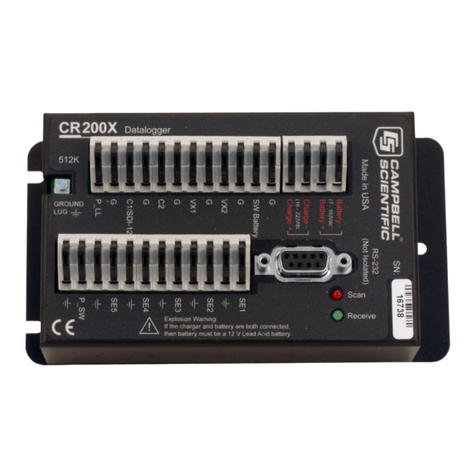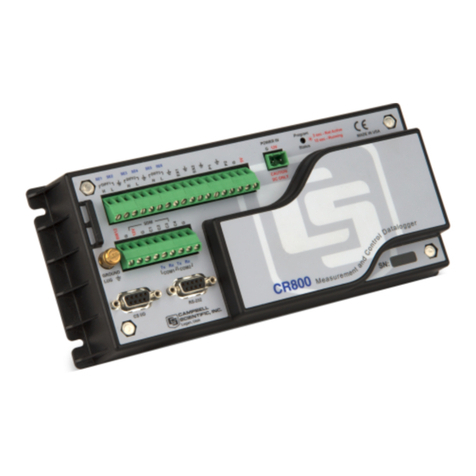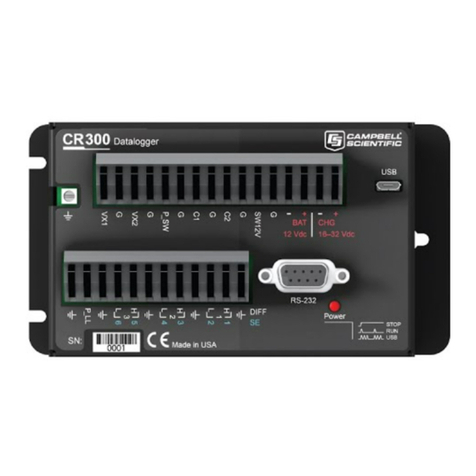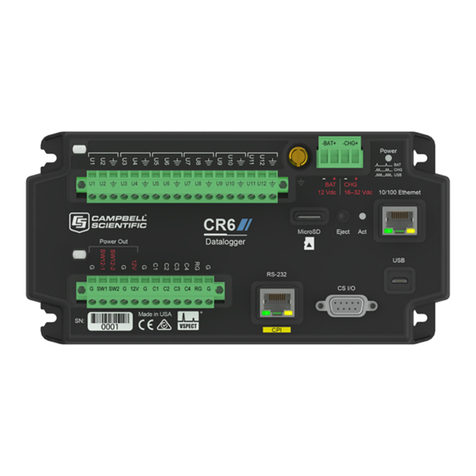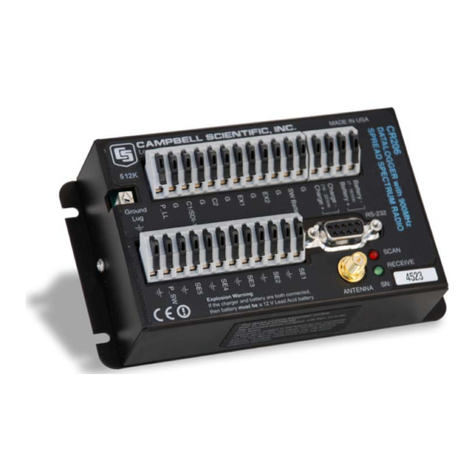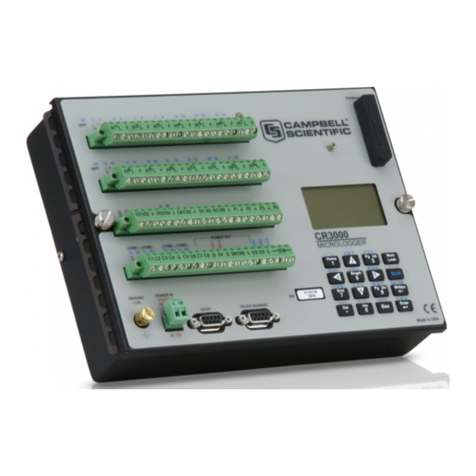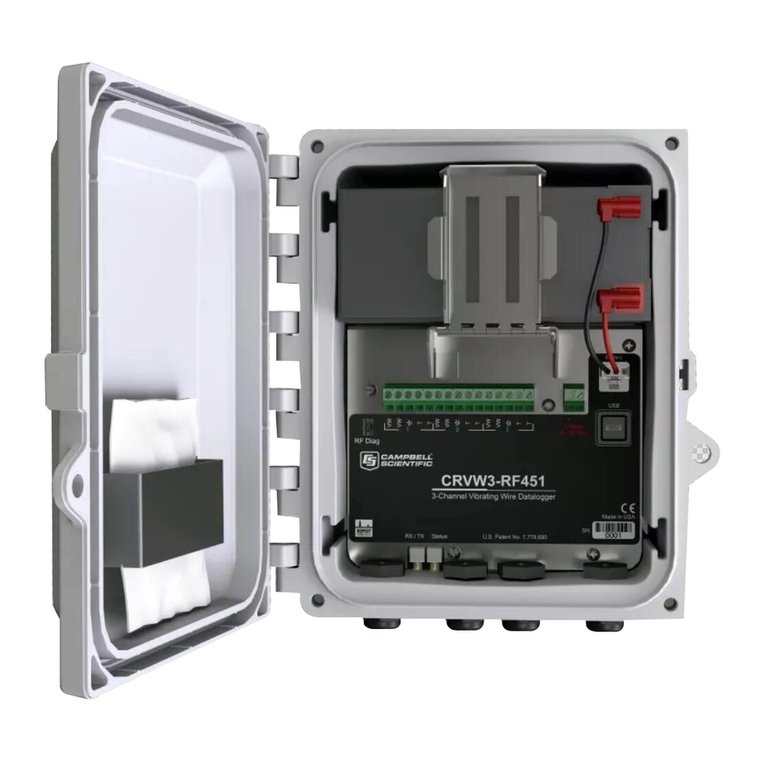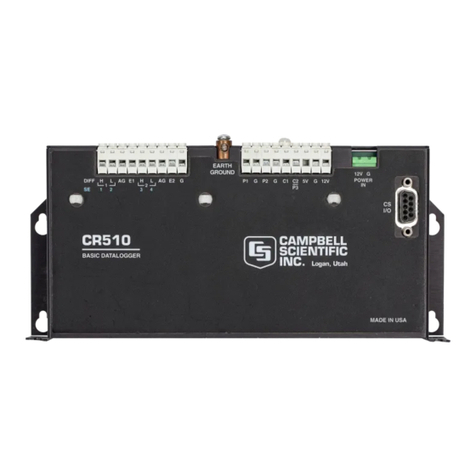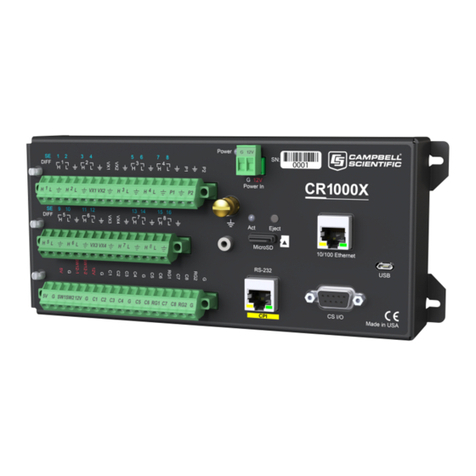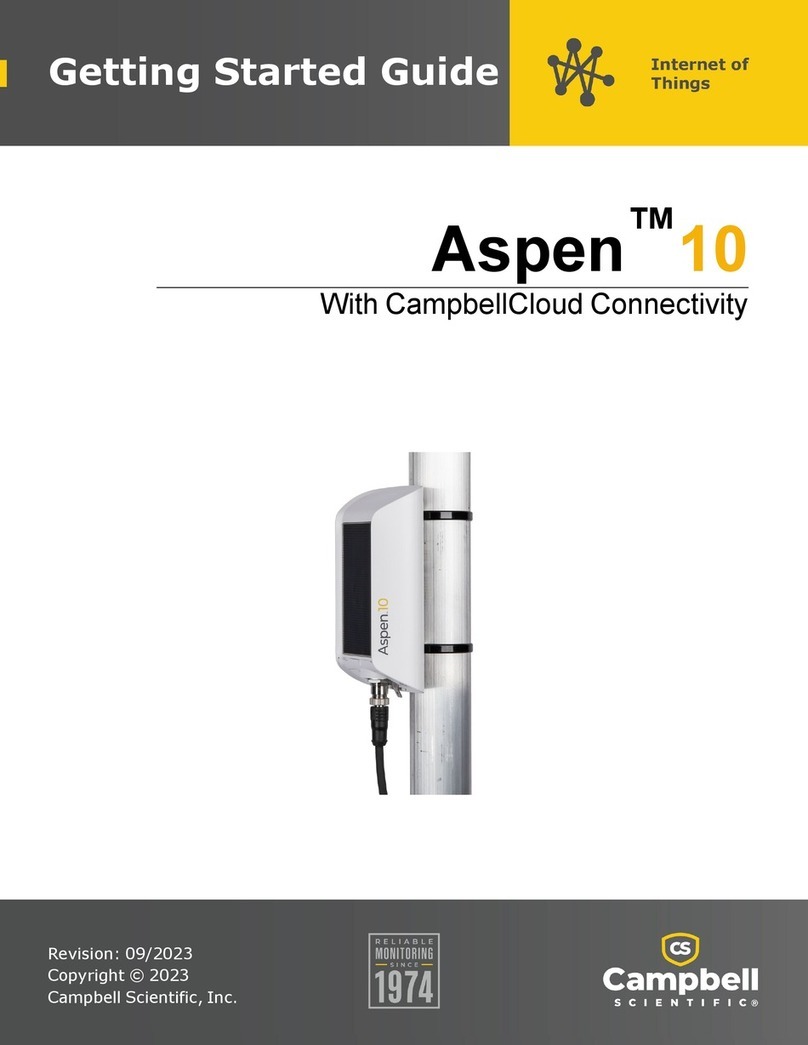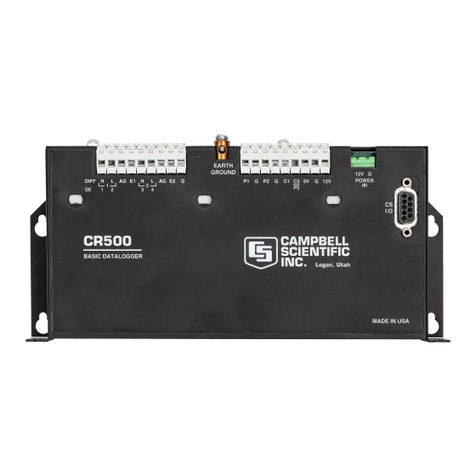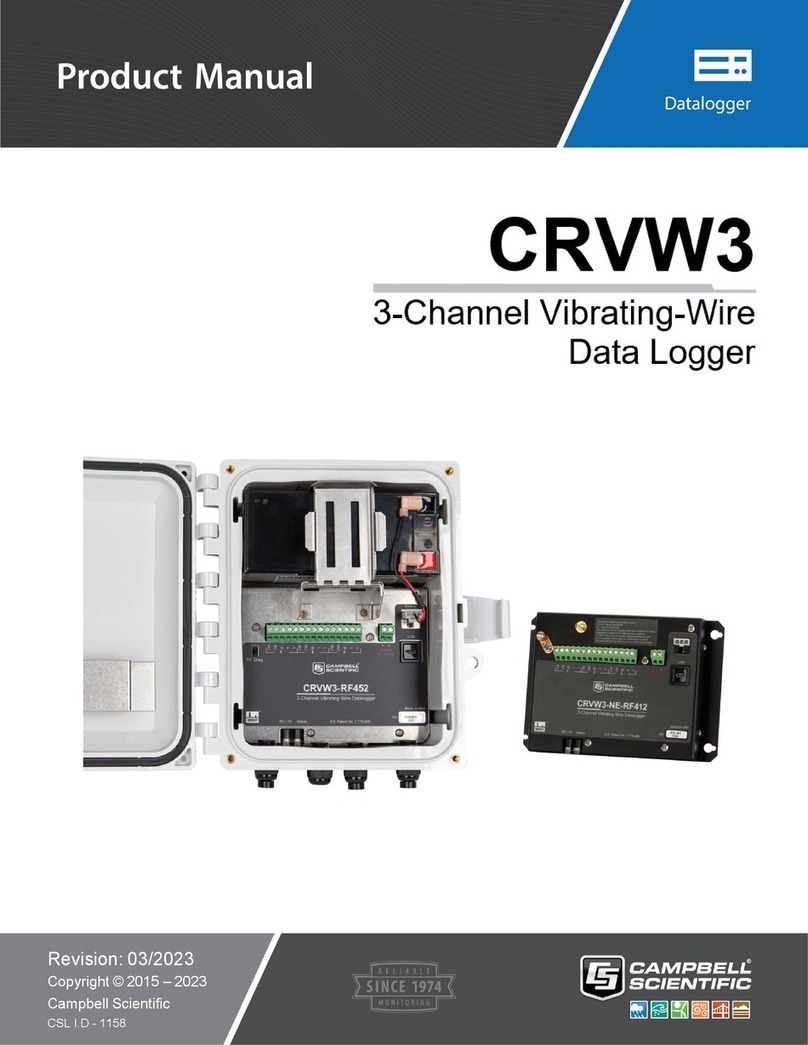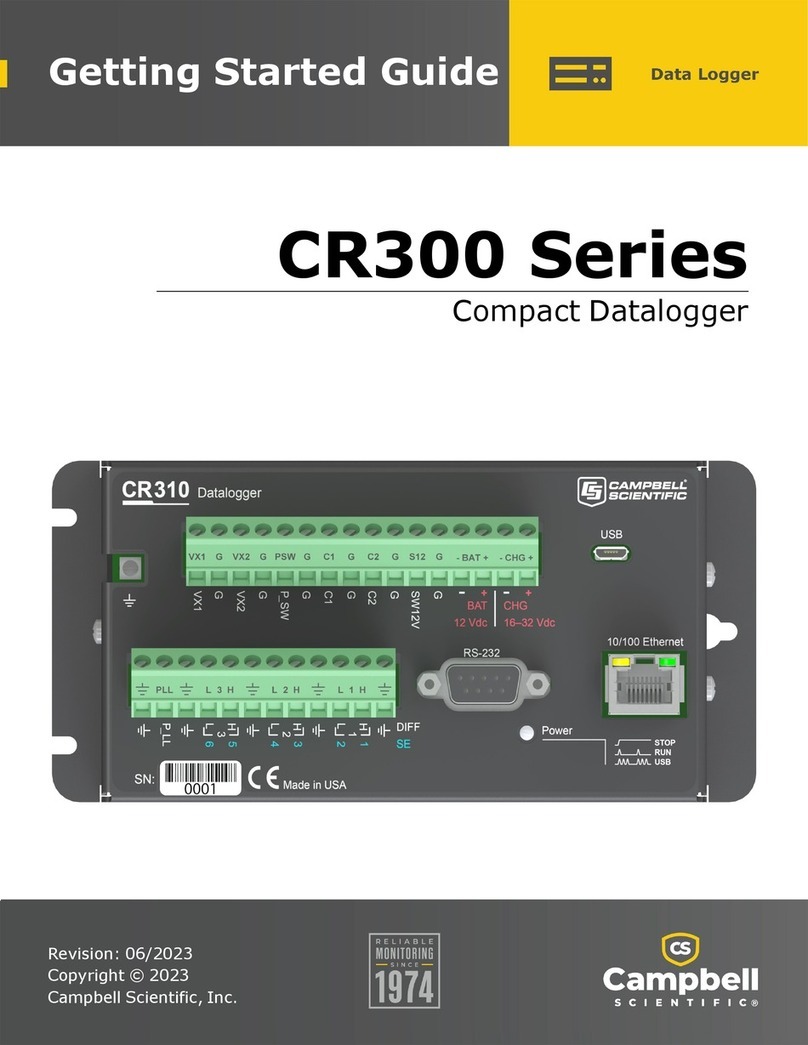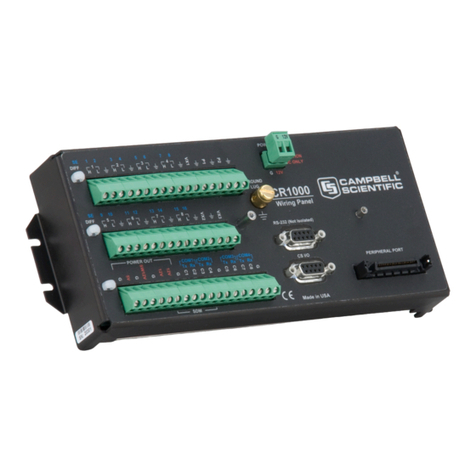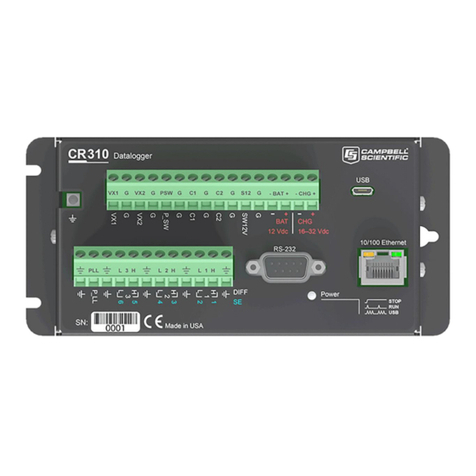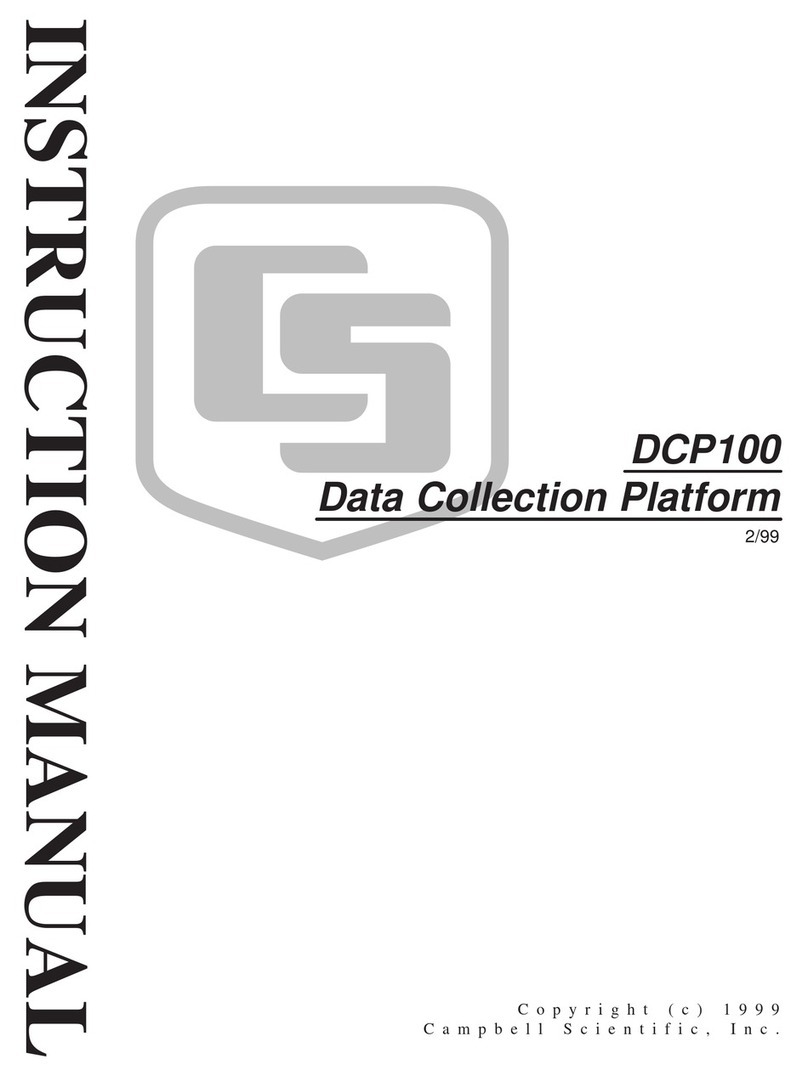
I
I
I
I
I
I
I
l
i
I SELECTED OPERATING DETAILS
I
I
I
1. StorinolData - Data is stored in Final PROMs are available which have different
Storag-{ only by Output Processing combinations of instructions. Appendix B
Instruiiions and only when the Output Flag describes the options available and gives
is set. i(Sections OV2 and OV3.3) the signatures of the current PROMS.
3. Data Tians{er - On-line data transfer f rom INSTRUCTIONS
Final Qtorage to peripherals (tape, printer,
Storagp Mo.-dule,'etc.)occurs onty if enabied Case Statement (83 & 93, Section 12)
with Inptruction 96 in the datalogger
prografn or in the *4 Mode. (se-clion +.t) Arc Tangent (66 Section 10)
2. Storing Date and Trme Date and time are
stored in Final Storage ONLY if the Reat
Time lrlrstruclionTT is used. (Section 11)
Final $torage Resolution - All Input Storage
values]are displayed ("6 mode) as high
resolulion with a maximum value ol99999.
Howerier, the default resolution for data
stored in FinalStorage is low resolution,
maxin'lum value of 6999. Results
exceefling 6999 are stored as 6999 unless
InstruOtion 78 is used to store the values in
Final $torage as high resolution values.
(Sections 2.2.1 and 11\
Floatirlrg Point Format - The computations
pedorfned in the 21X use floating point
arithnletic. CSI's 4 byte floating point
numbFrs contain a 23 bit binary mantissa
and a16 bit binary exponent. The largest
and srinallest numbers that can be stored
and piocessed are 9 x 1018 and 1 x 10'1e,
respeptively. (Section 2.2.2)
Erasinrg Final Storage Data in Final Storage
can be erased without altering the program
by repartitioning memory in the'A Mode.
(Section 1.5.2)
ALL memory can be erased and the 21X
completely reset by entering 978 for the
numler of bytes left in Program Memory.
(Section 1.5.2)
The set of instructions available in the 21X
is delermined by the PROM (Programmable
Read Only Memory)that it is equipped with.
9. Significant changes in the current PROM
release (OSX-0.1 , OSX-1 .1 , and OSX'2.1)
include:
Wind Vector (69 replaces 76, Section 1 1)
Serial Output has an option to send a file mark
to a Storage Module (96, Section 12)
Low Pass Filter: on the first execution after
compiling, the input value is used for the filtered
result
Commands to set, toggle and pulse porls are
now available for Program Control Instructions
(Section 12)
Revision 3 of the above PROMS includes the
capability to sense status(O V low, 5 V high) on
the high side of a differentialchannel
(lnstruction 91 , Section 12).
FEATURES
Ports can now be manually toggled from the
keyboard or TERM (PC208 software)
The.B Mode now displays PROM version and
revision, execution overruns, and accumulated
error 8s in addition to signatures.
The capability of transferring programs via
cassette tape is no longer supported in the
standard PROM options.
4.
5.
o.
7.
8.
